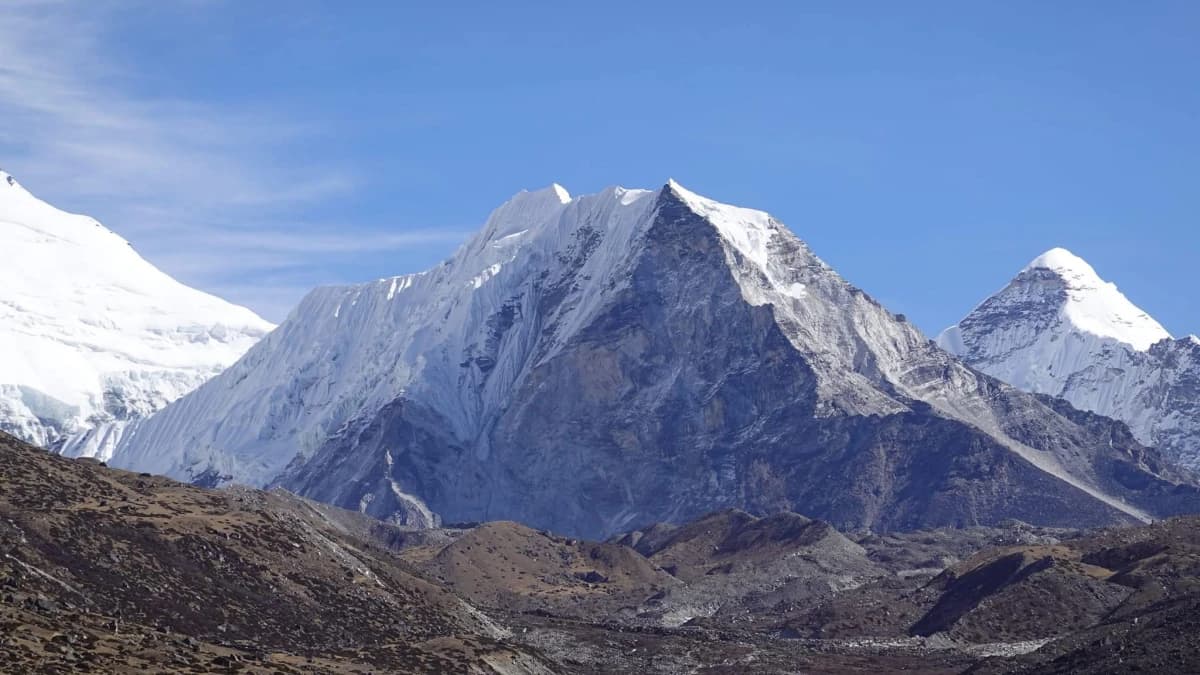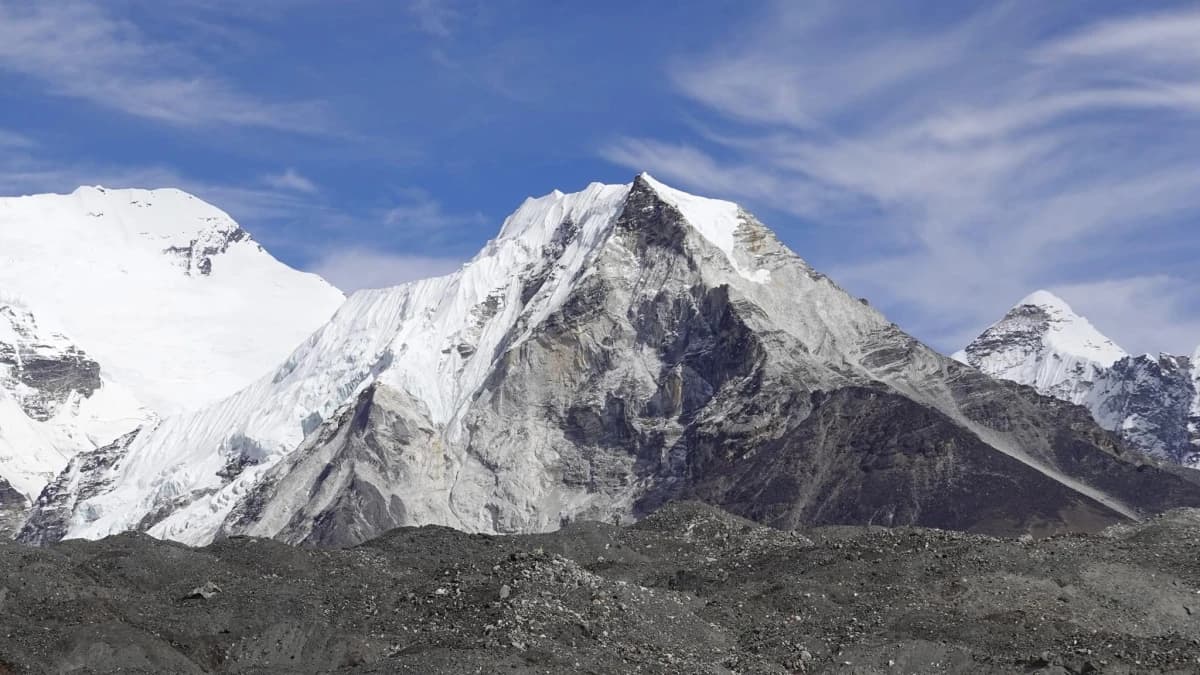Island Peak- Perfect Climbing for Beginners
Island Peak Climbing is the most popular trekking peak in Nepal. From Dingboche the mountain is seem as an island in a sea of ice. Island Peak summit is interesting and attractive with a highly glaciated west face rising from the Lhotse Glacier. The mountain itself is the extension of the south Ridge of Lhotse shar separated by a small col. the ridge raising to the south from this point leads to the summit of Island Peak. The extension of this ridge descending southwest is the part of the normal route of ascent and leads to the south summit Island Peak not only provides an enjoyable climb but also provides some of the most spectacular scenery of Himalayas in the Khumbu region. Seen from the summit the giant mountains- Nuptse (7,879m), Lhotse (8,501m), Lhotse middle Peak (8,410m) and. Lhotse Shar (8,383m) makes a semi circle in the north. The views of Makalu (8475m) in the east Baruntse and Amadaldam in the south add more charm for climbing
Island Peak. Island Peak, also called Imja Tse locally, is located in the Khumbu region close to Mount Everest at an elevation of 6,189 meters (20,305 feet). It is called "Island Peak" because, from Dingboche, it seems like an island in a sea of ice.
The ascent provides stunning views of some of the highest peaks in the world, including as Ama Dablam, Makalu, Nuptse, and Lhotse. Adventurers can gain cultural insights into Sherpa settlements such as Namche Bazaar, Tengboche, and Dingboche while traveling the famous Everest Base Camp Trek route to Island Peak.
Novice climbers who want to start their mountaineering career by summiting Island Peak and then on to other peaks often choose Island Peak climbing. The mountain was called "Island Peak" in 1952 AD. It might be challenging to climb Island Peak's massive, heavily glaciated west face, which rises from the Lhotse Glacier, but the breathtaking views from the summit are unquestionably worth the effort.
Island Peak is more than just a climb; it’s a gateway to experiencing the rugged beauty and spiritual serenity of the Khumbu region, making it a must-do for adventurous souls seeking a Himalayan challenge.
In Nepal's Khumbu region, ascend Island Peak (6,189m) for stunning views of Makalu, Lhotse, and Ama Dablam. This journey, which combines technical mountaineering, Sherpa culture, and expansive Himalayan splendor, is perfect for beginner climbers.
Major Highlight of Island Peak
- Beautiful Panoramic Views: On a clear day, Island Peak (6,189m) provides stunning views of the Himalayan giants, including Makalu, Nuptse, Ama Dablam, and Lhotse. The summit offers a view of the Khumbu region that is unmatched.
- Gateway to High-Altitude Climbing: For those who want to climb mountains, Island Peak is the perfect place to go. It helps you develop technical abilities like rope handling, crampon use, and glacier navigation while introducing you to climbing peaks over 6,000 meters.
- Accessible Adventure: Even moderately experienced hikers can reach Island Peak with the right preparation and acclimatization thanks to a well-established trekking path via the Everest Base Camp Trail.
- Cultural Immersion: You can feel the warmth of Sherpa customs, culture, and Buddhist spirituality as you go past Sherpa communities like Namche Bazaar, Tengboche, and Dingboche on your way to Island Peak Base Camp.
Best Time for Island Peak Climbing
Island Peak Climbing is best during a few different seasons of the year. As with the Everest Base Camp Trek and Everest Three High Passes Trek, the best seasons to climb Island Peak are thought to be spring and fall. You must keep an eye on the weather at Island Peak before determining when to start climbing, since your trip will start in Chhukung.
The Autumn and Spring seasons, which run from September to November and March to May, respectively, are ideal for Island Peak Climbing adventures. Because of the clear skies and spectacular views, these months enhance your climbing experience on Island Peak. The favorable weather and temperatures throughout these months enhance your climbing experience. The cold weather is one of the most serious difficulties at higher heights. The good weather allows for comfortable climbing during these months. Winter is too cold for you to climb, and summer is often wet, which may pose a safety risk when climbing. As an outcome, you should only climb Island Peak during the most appropriate period.
How Expensive for Island Peak Climbing?
It is the reasonable climbing package which can be affordable foe every individual climber or trekker. This cost will include all the meal and accommodation facility as well as all permit that are required in this expedition.
What Type of Lodging and Fooding we Get in this Island Peak Climbing?
We will be living in luxury lodgings in Kathmandu, regular teahouses on the hike, and tents for the climbing portion of our vacation. The price of the trip includes all of these. While tent accommodations will come with foam beds, the majority of teahouse accommodations will only feature shared restrooms. During the climbing portion, restrooms will be available with the required natural preservation. While all lodging in Kathmandu and teahouses will be twin-shared, each person will receive a solo tent for the climbing portion. In Kathmandu, solitary rooms are available if you would like them, but there is a fee. However, please be aware that a few of teahouses along the walking route do not provide single rooms. A single room in Kathmandu is guaranteed when you pay a single extra, but in the trekking areas at higher elevations, this may not always be possible.
We will have the chance to sample a range of cuisines, including Tibetan, Indian, Nepalese, and continental fare, while climbing Island peak. All meals, including breakfast, lunch, and supper, will be served during the trekking and climbing portions, while our hotel in Kathmandu will have a buffet-style breakfast. Additionally, we may anticipate special welcome and departure meals, which will undoubtedly be delicious gastronomic events.



